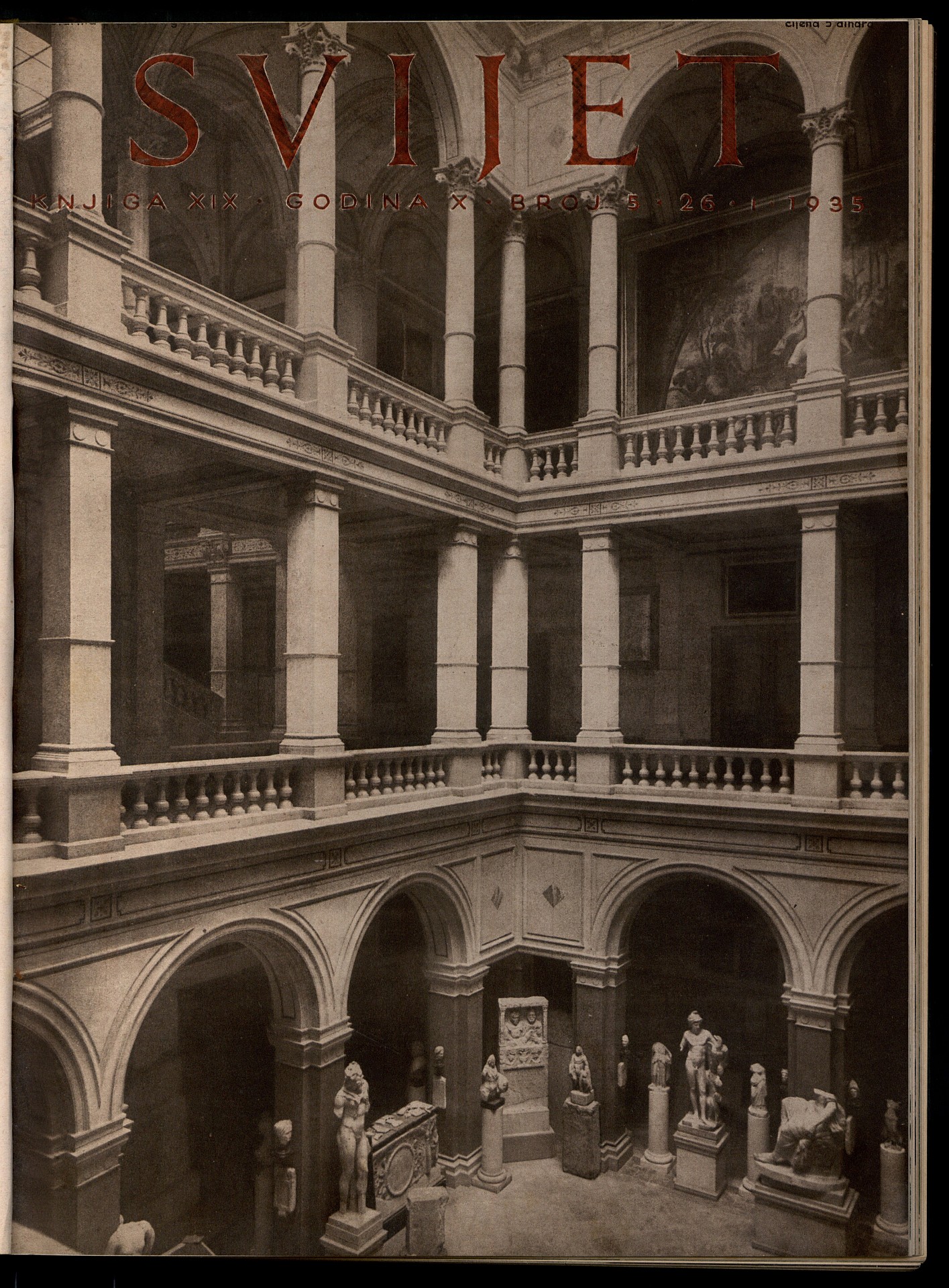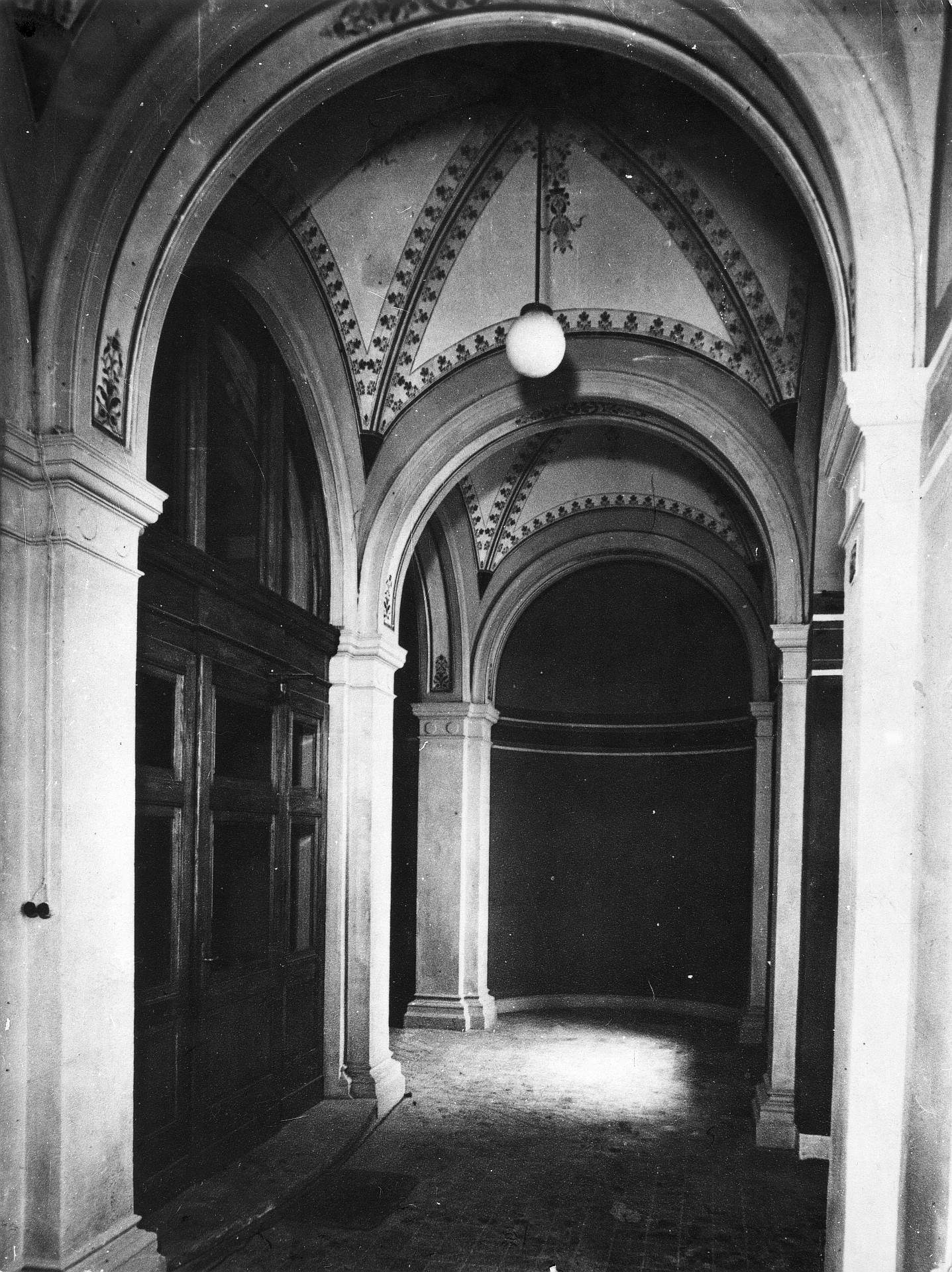The current state of the inner walls of the Academy’s palace is the result of several adaptations that took place during the last century and the beginning of this century. Repeated painting and over-painting of the walls, especially during the great modernization of 1948, contributed to the poor preservation status of the original wall paintings. Within the preparations for repairs of the damage that occurred as a result of the earthquake that shook Zagreb in the Spring of 2020, an array of experts were employed to research the sequence of paint and wall paintings, and to “reconstruct” the painted layer from the time of the final decoration of the palace prior to its consecration in the year 1884.
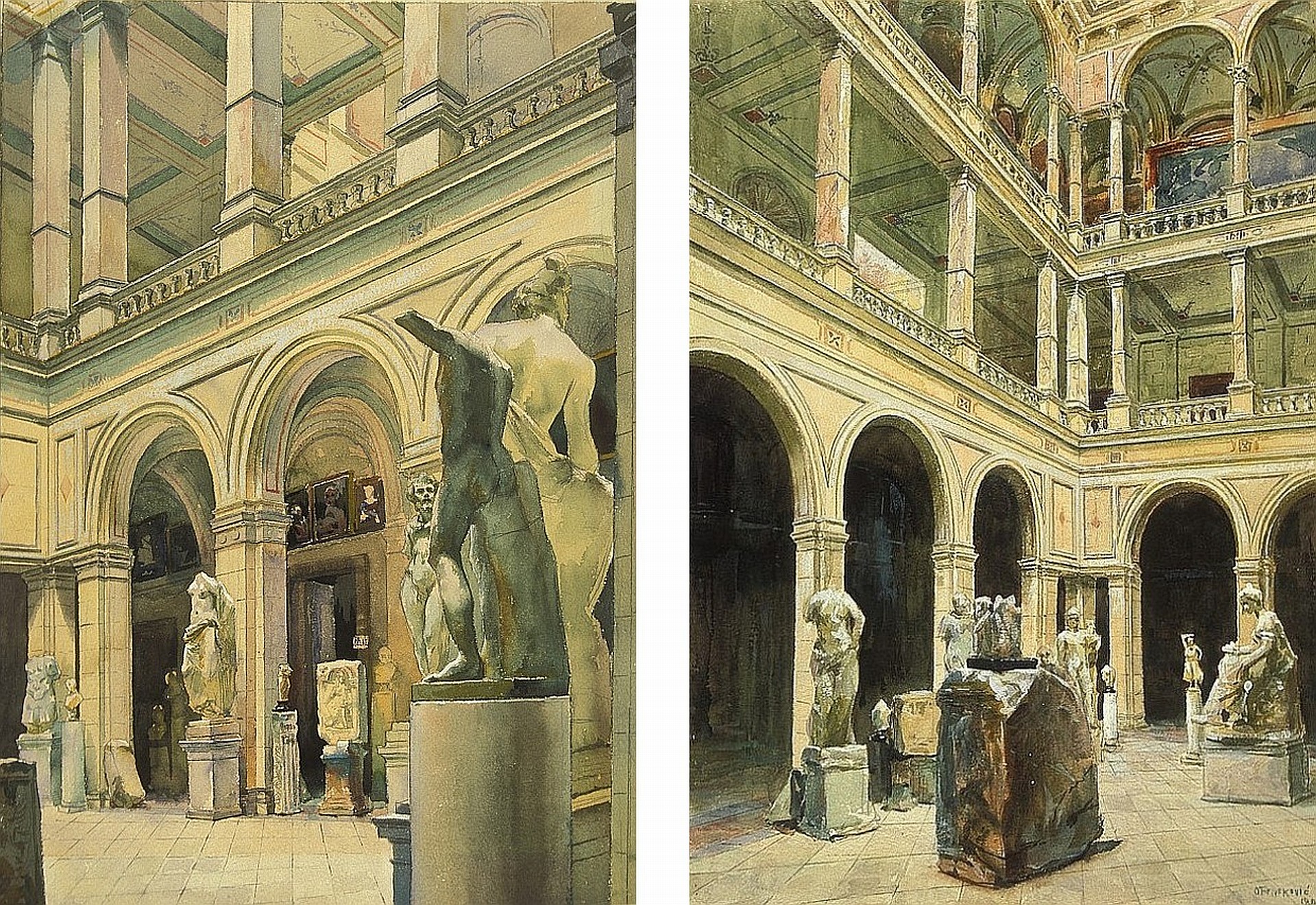
After the November 1880 earthquake, an extensive intervention to restore the palace ensued. However, even after the restoration, preconditions for its ceremonial opening were not met. What remained was to decorate the Gallery and the wall surfaces in the atrium, archways, and stairways. The project for painting the walls, ceilings, and archways was created by architect Herman Bollé, and completed by his frequent collaborator, decorative painter Johannes Clausen (1855 – 1927).
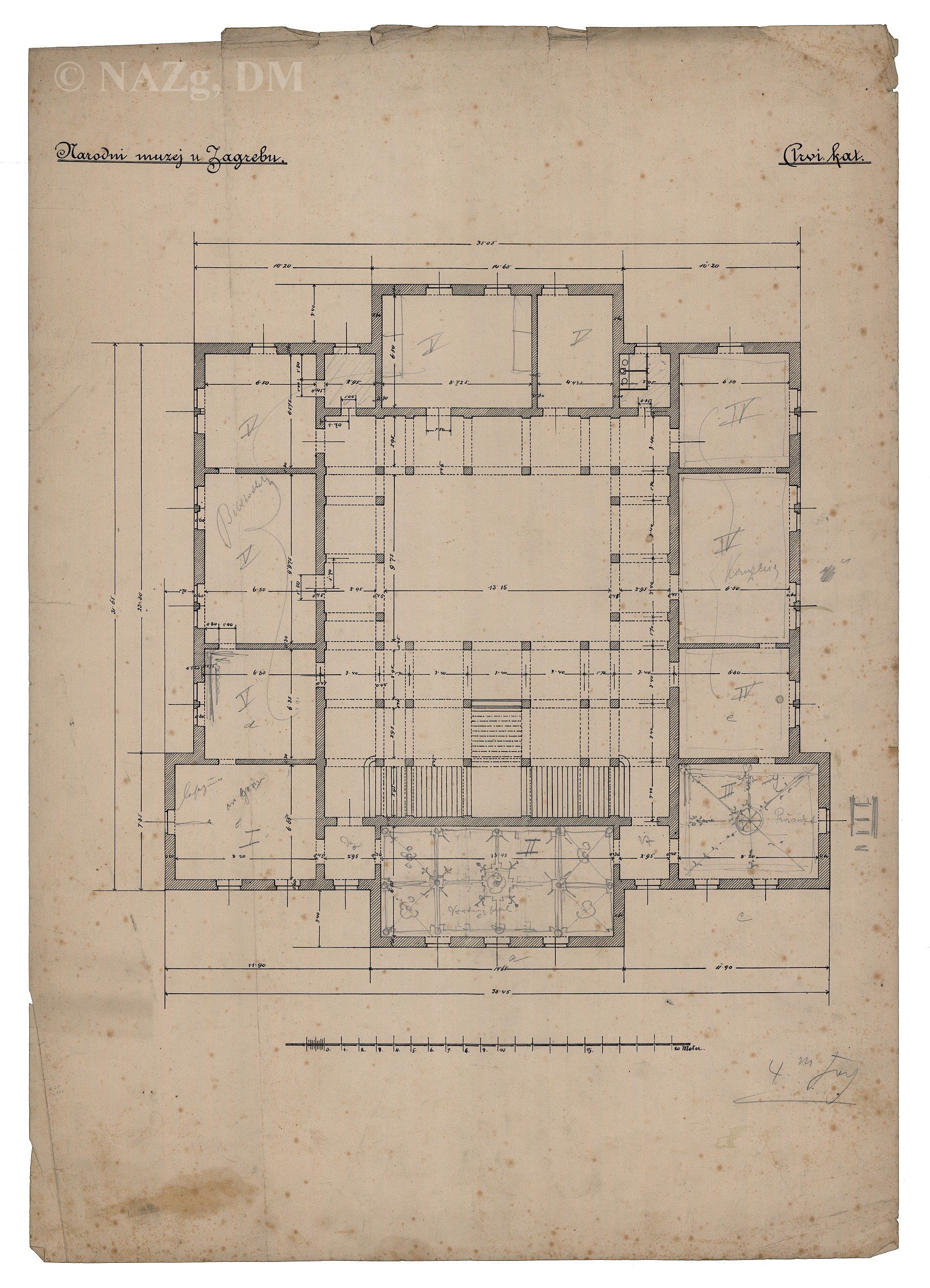
Clausen was born in Garding, Schleswig, and arrived in Zagreb from Vienna – judging by a letter from the end of 1883 in which Rački, touching upon the subject of the Palace’s wall decorations, writes to Strossmayer about the painter for the first time.
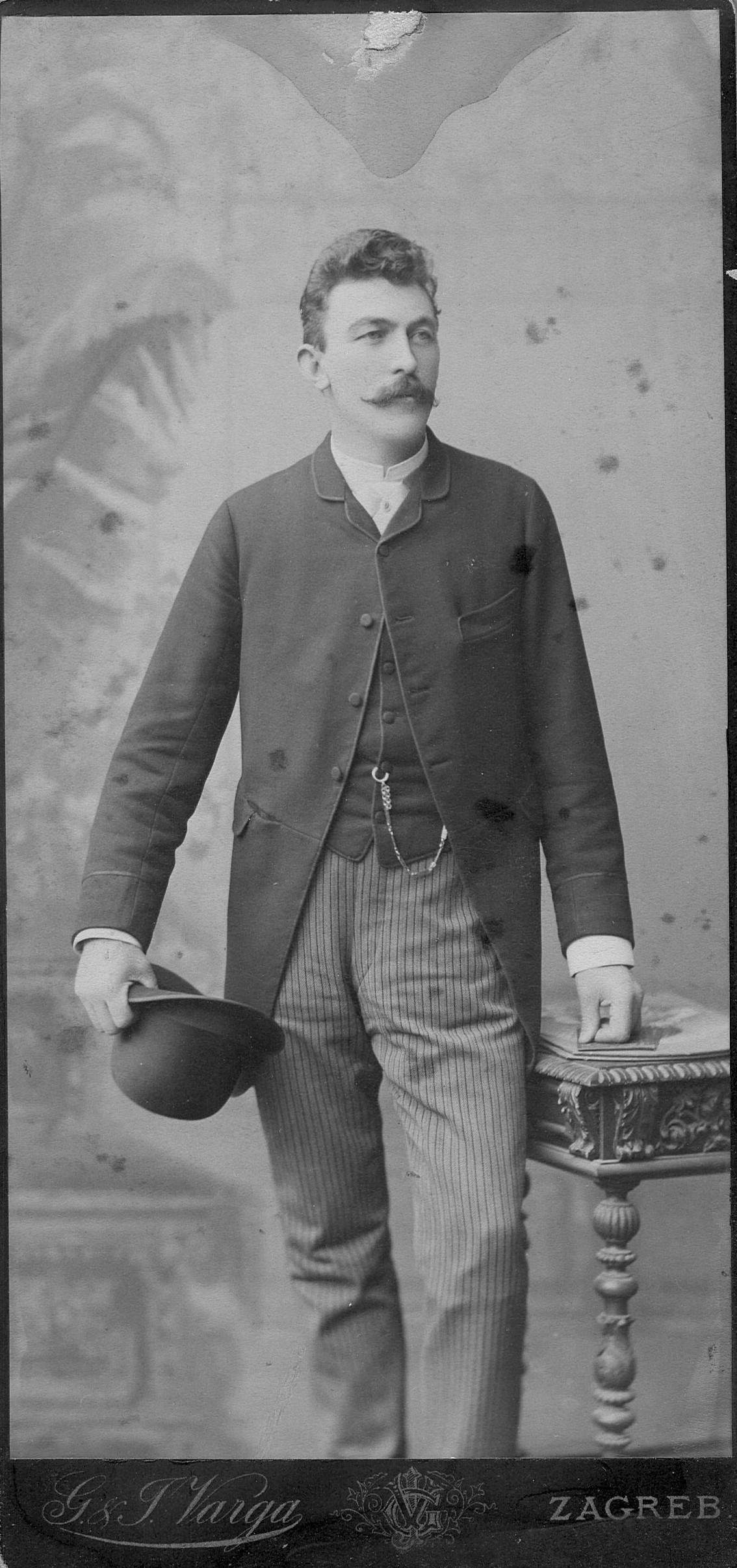
Preserved trade books from Zagreb relate that Clausen gained his permit as a wall painter and decorator in the year 1881. The following year, he was employed to create the wall decorations for the ceremonial hall of the Croatian Music Institute, within the restoration project of the building started after the earthquake.

Bollé and Clausen collaborated successfully for the following decade. In that time, almost all of Bollé’s projects, whether new buildings or restorations of old ones, included decorative wall painting by Clausen. Some examples from Zagreb are the chapel of the Seminary of the Archbishopric, the interior of Zagreb’s cathedral, the vaults and walls of the sanctuary of the Franciscan church, the Orthodox church of the Transfiguration, the ceiling of the nave and sanctuary of the Greek Catholic church, and the palace of the Provincial Government’s Department of worship and education, where Clausen executed the decorative sequences of the wall paintings in the Pompeian room, and also painted the walls in the Golden Hall. Under Bollé’s guidance, Clausen also worked outside of Zagreb. For example, he decorated the interior and front façade of the Croatian Pavilion at the Provincial Exhibition held in Budapest in the year 1885. He also decorated the county churches in Jastrebarsko, Bjelovar, and Križevci. However, Clausen went blind in 1893 after getting color powder in his eyes while working. Soon after this he moved to Graz, and his workshop, located on Radićeva Street no. 3 at the time, was taken over by painter Josip Muravić. An advertisement published in the year 1891 states that Clausen’s previous workshop was located in Ilica Street no. 35. In several of these advertisements, the master painter recommended himself for “executing church paintings and related painting work on walls, decorative painting and varnish work”, as well as creating “plaster, paper and stucco decoration for ceilings and walls, door posts, crown moldings, rosettes, corners, etc.”.

Although the Bishop had expressed the wish that the interior of the Academy’s palace be painted by Eduard Petz, who participated in the decorative painting of the Đakovo Cathedral, Clausen was chosen for the task. At the beginning of February 1884, Rački informed Strossmayer that Bollé would soon begin creating the design for the decoration and that he would hire Clausen to do the work. Somewhat earlier, Strossmayer had suggested to the Academy President that, with Kršnjavi’s consent, he should strive for “the décor to be simple, but beautiful and, consequently, a bit cheaper”. The painting process began no sooner than May and lasted for five months.
A few of the preserved images of the Palace’s interior from the first decades of its existence, most of which attempt to encompass the whole interior with their framing, and focus mainly on the atrium, allow for only a rough idea of the appearance of its walls.
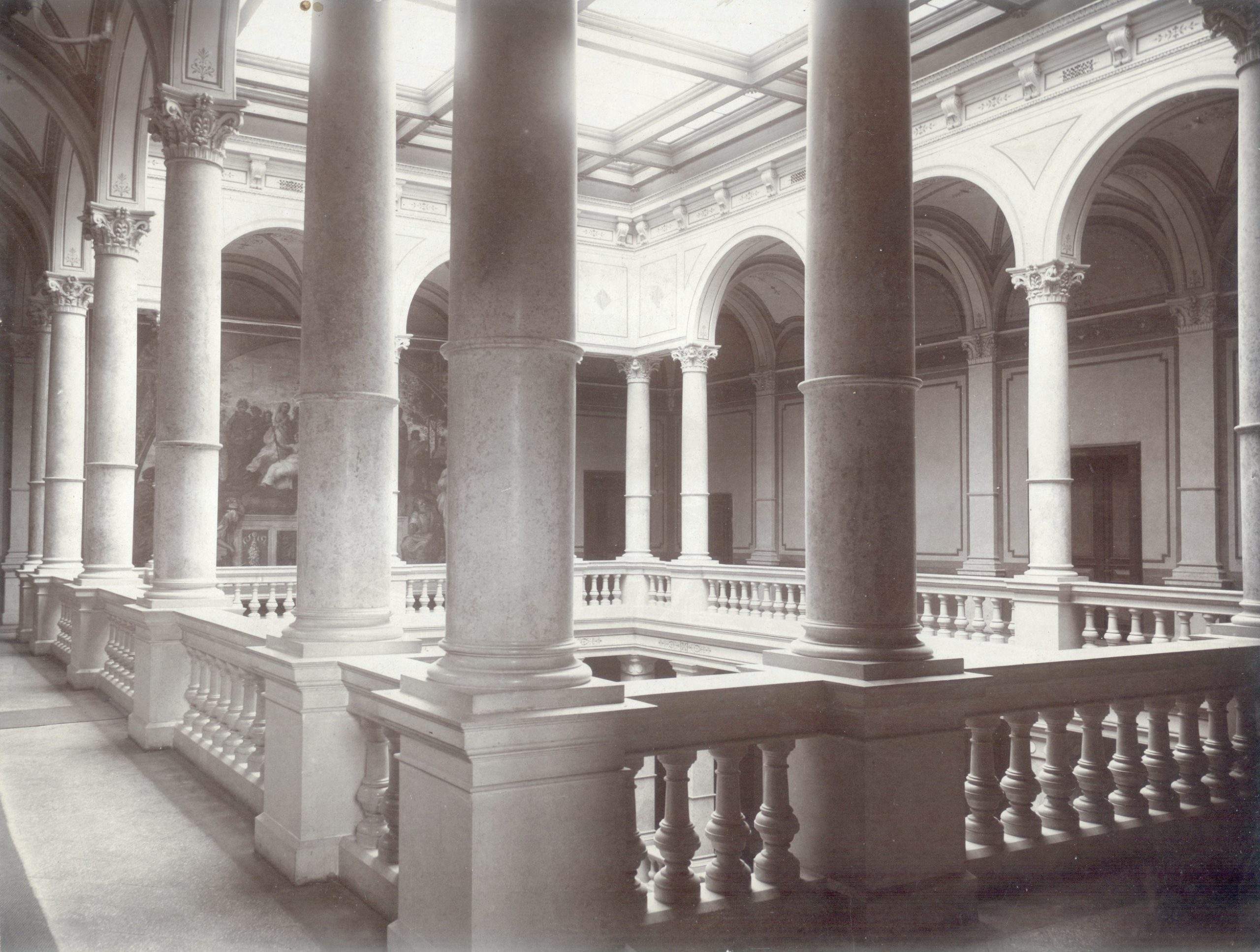
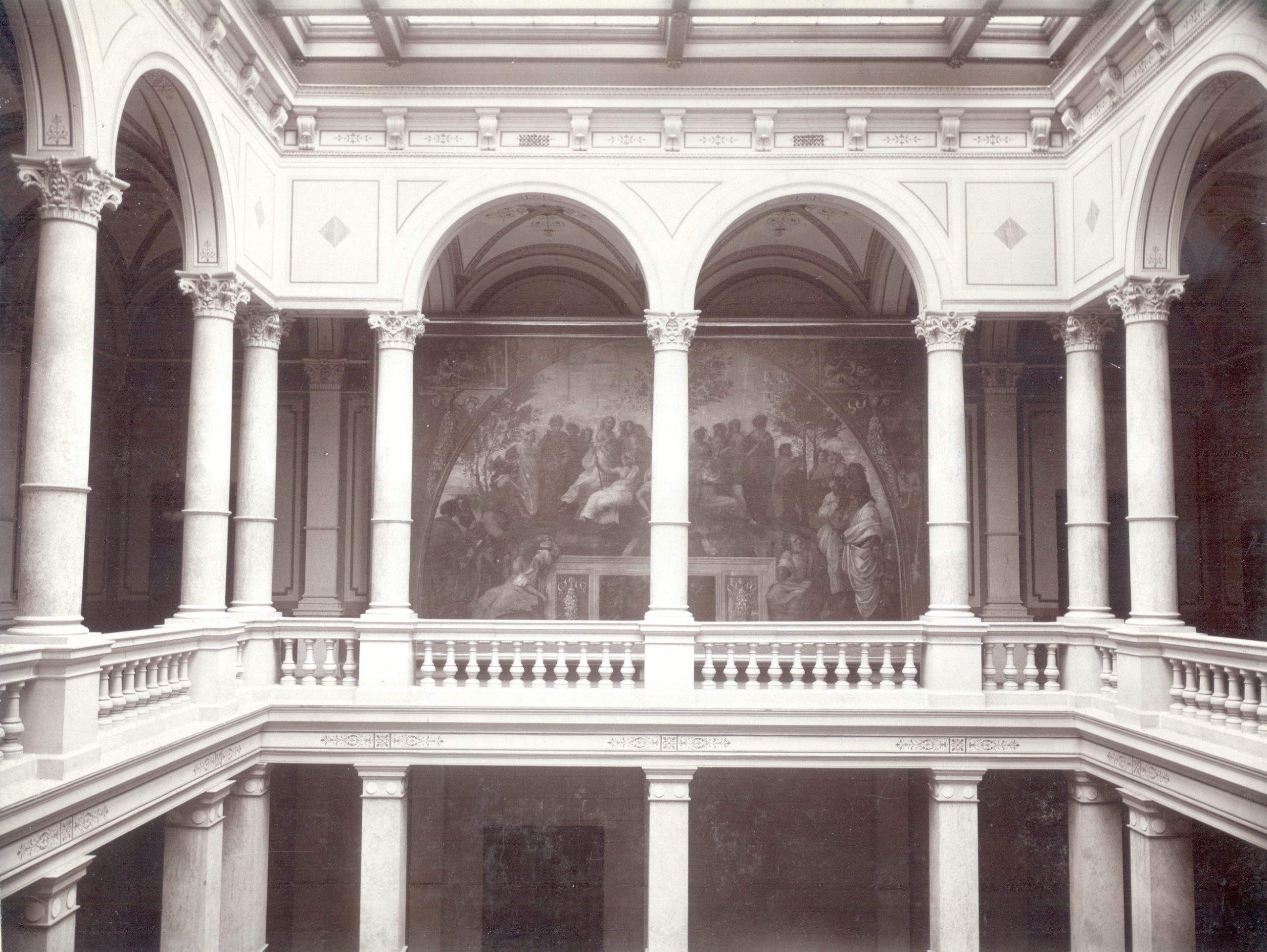
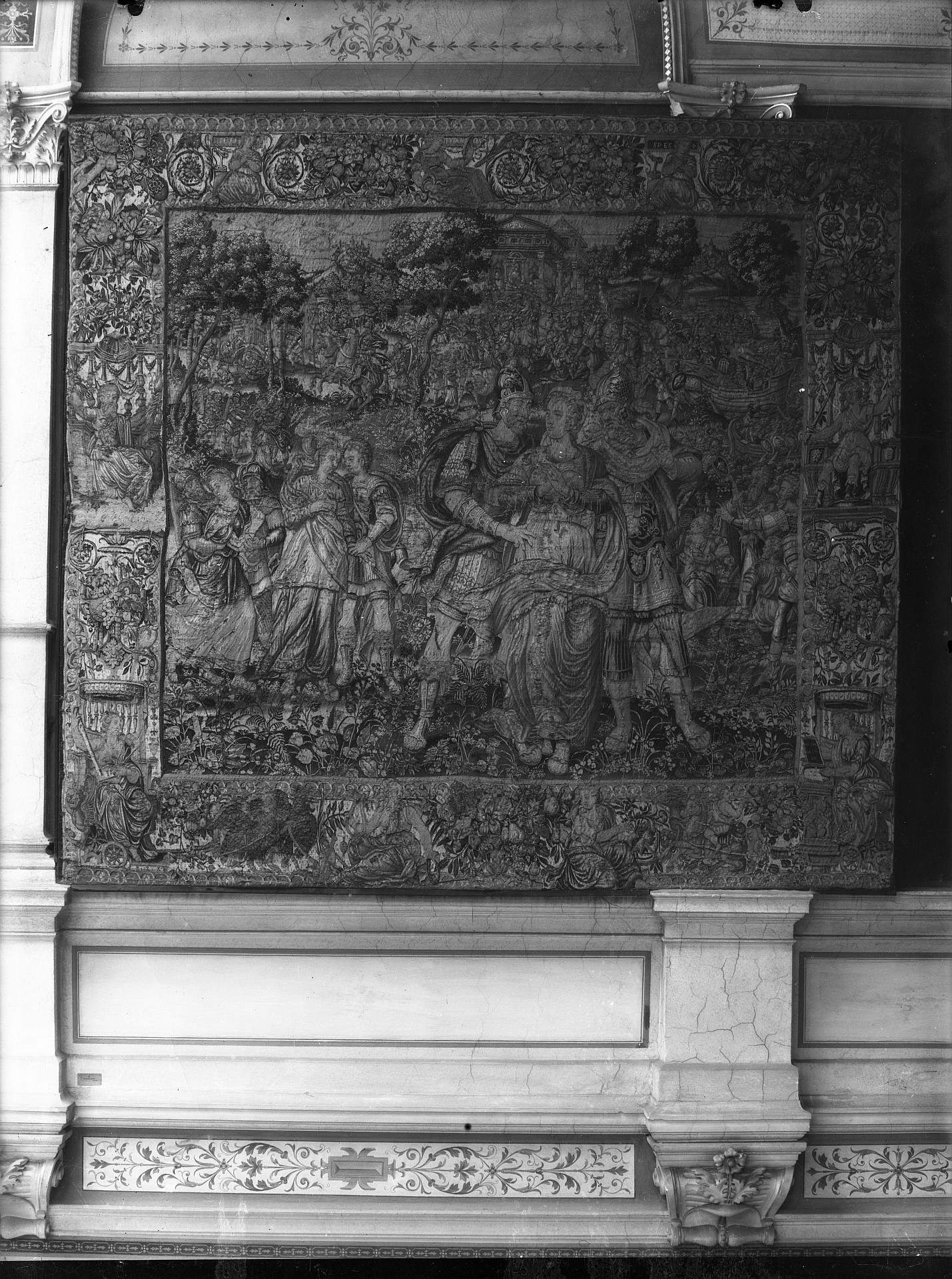
To this day we have found no photographs that would testify to the appearance of the Gallery’s interior prior to the 1930s, until when at least one major renovation was conducted that included work on the interior walls. Therefore, for now we cannot reliably make judgements on the character of the wall painting decoration in the exhibition rooms during the ceremonial opening of the Gallery. A letter from Kršnjavi to Rački from May of 1881 indicates that he was not pleased with “the painting” covering the walls before the earthquake: “Painted as they are now, the walls would kill our paintings, the reflections in those rooms would be so insufferable that the paintings would get lost very quickly”. Because of this fact, as well as because of the damage inflicted by the earthquake, Kršnjavi believed that the Gallery should be painted anew in the general restoration, but that this time, the “color scheme of the walls” must be “dark”.
Judging from the photographs of other interior parts of the Academy palace from the 1930s and 1940s, it seems that certain parts of the wall painting decoration from the time of the Gallery’s opening were preserved, at least on the ceilings, even after the “post-earthquake” painted layer was removed from the Gallery walls. It seems that these parts were retained until the already mentioned great renovation of the building that was conducted in the mid-20th century.
